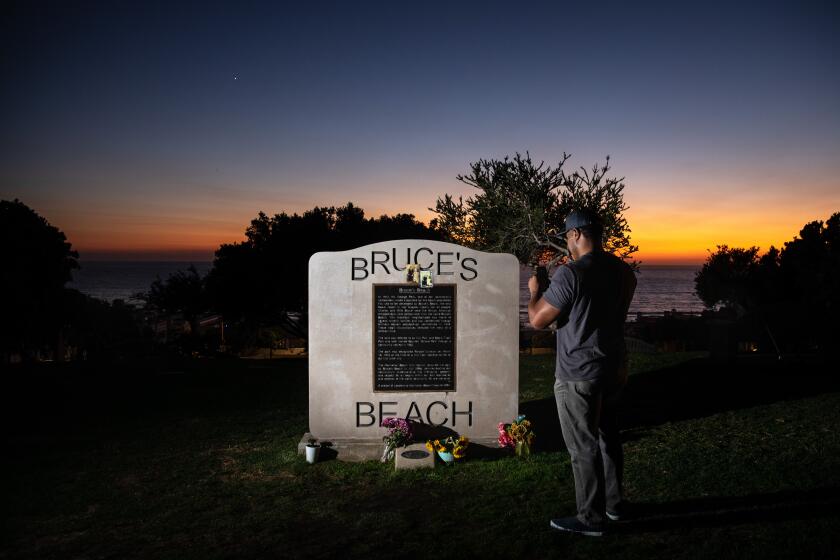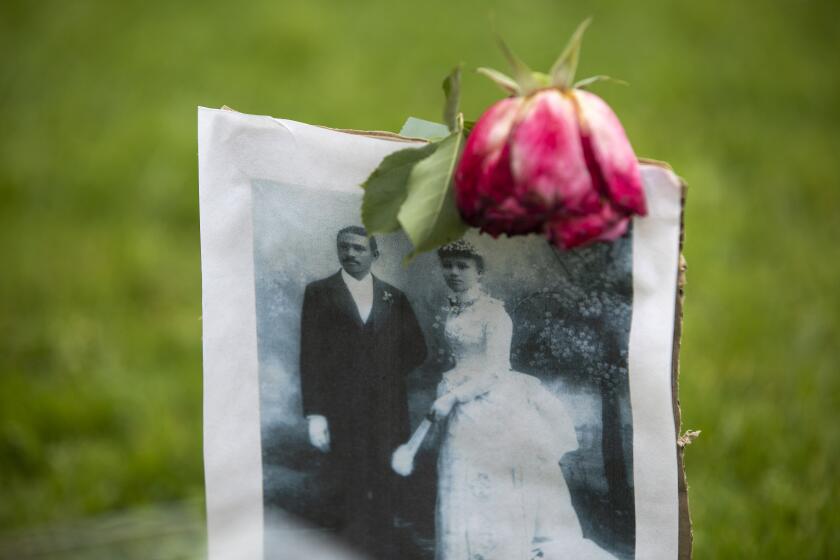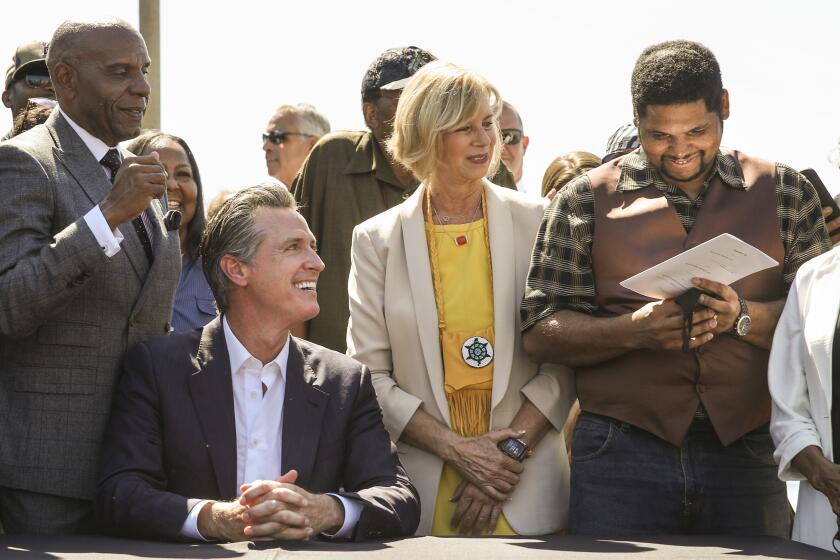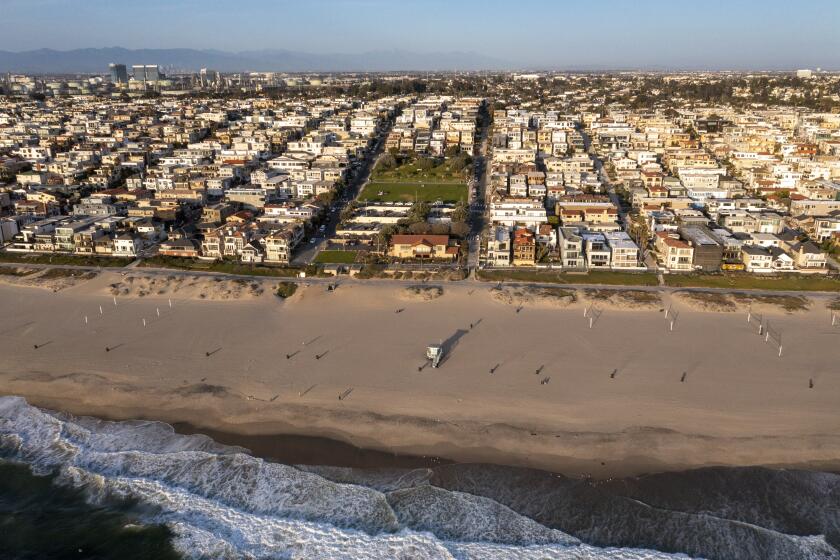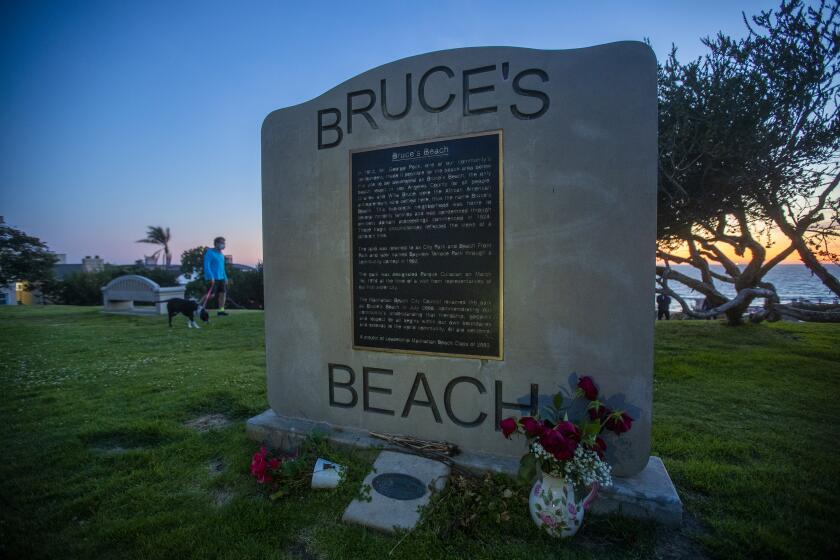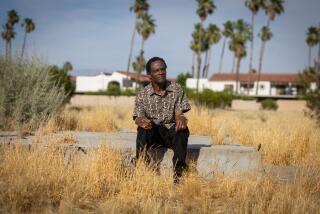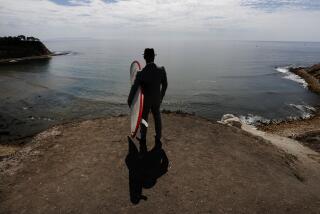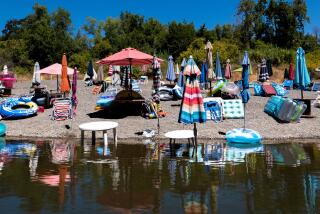Bruce’s Beach can return to descendants of Black family in landmark move signed by Newsom
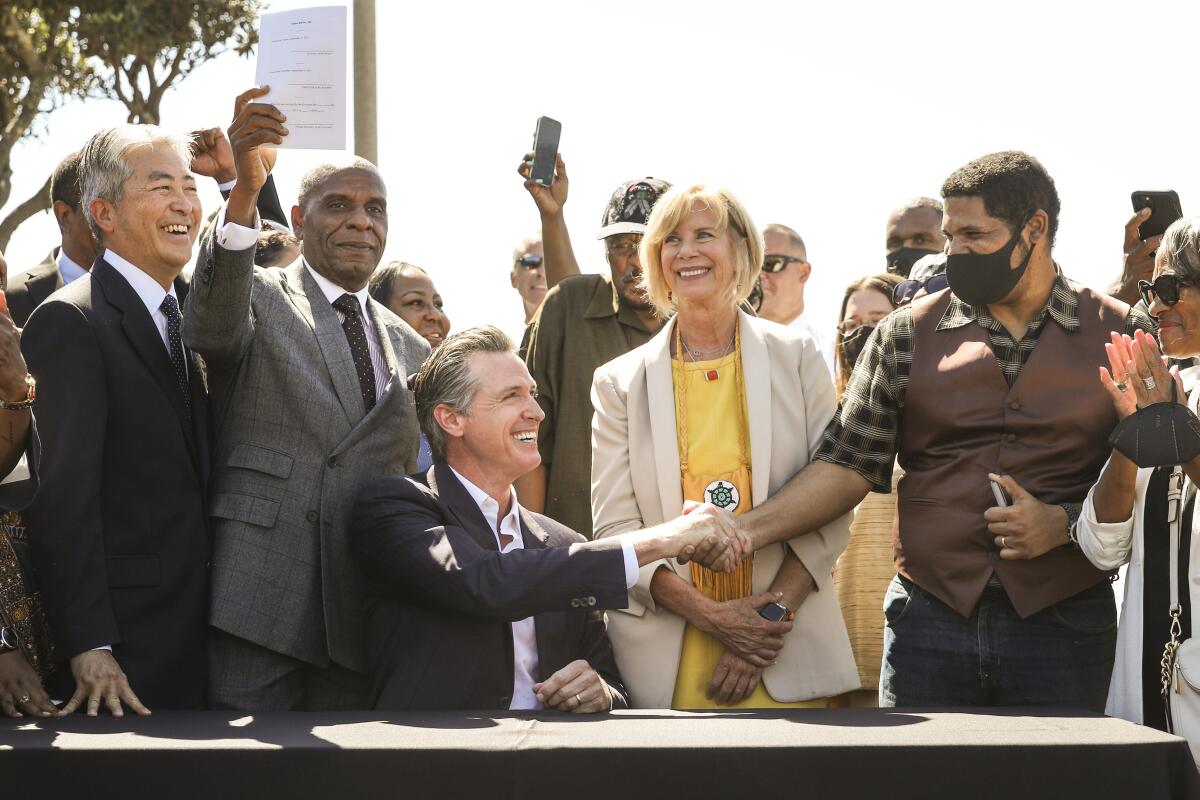
- Share via
In a history-making move celebrated by reparations advocates and social justice leaders across California, Gov. Gavin Newsom has authorized the return of property known as Bruce’s Beach to the descendants of a Black couple that had been run out of Manhattan Beach almost a century ago.
Senate Bill 796, signed into law Thursday by Newsom before an excited crowd that had gathered on the property, confirms that the city’s taking of this shorefront land — on which the Bruces ran a thriving resort for Black beachgoers — was racially motivated and done under false and unlawful pretenses.
“The land in the City of Manhattan Beach, which was wrongfully taken from Willa and Charles Bruce, should be returned to their living descendants,” the legislation declares, “and it is in the public interest of the State of California, the County of Los Angeles, the City of Manhattan Beach, and the People of the State of California to do so.”
Gov. Gavin Newsom has authorized the return of property known as Bruce’s Beach to the descendants of a Black couple that had been run out of Manhattan Beach almost a century ago. Catch up on The Times’ coverage.
The bill had passed unanimously this month in the state Legislature and includes an urgency clause that allows Los Angeles County, which currently owns the property, to immediately begin the process of transferring the land.
State Sen. Steven Bradford (D-Gardena), who authored the bill, said this is a first step toward correcting the many injustices that continue to haunt the state’s — and nation’s — history.
“This bill sets the tone for the future of reparations in California,” said Bradford, who is a member of California’s recently formed reparations task force. “If you can inherit generational wealth, you can inherit generational debt. The city of Manhattan Beach owes a debt to the Bruce family. The state of California owes a debt to the Bruce family, and the county of Los Angeles owes a debt to the Bruce family — and our governor today is here to fix his signature to this bill to pay that debt to the Bruce family.”
The story of Bruce’s Beach attracted increasing attention this last year — and stirred quite a bit of controversy in the very white city of Manhattan Beach. (Black residents to this day make up less than 1% of the population.) Some longtime community leaders have pushed back on the notion that people today should be on the hook for injustices committed 100 years ago, while others have called for restitution.
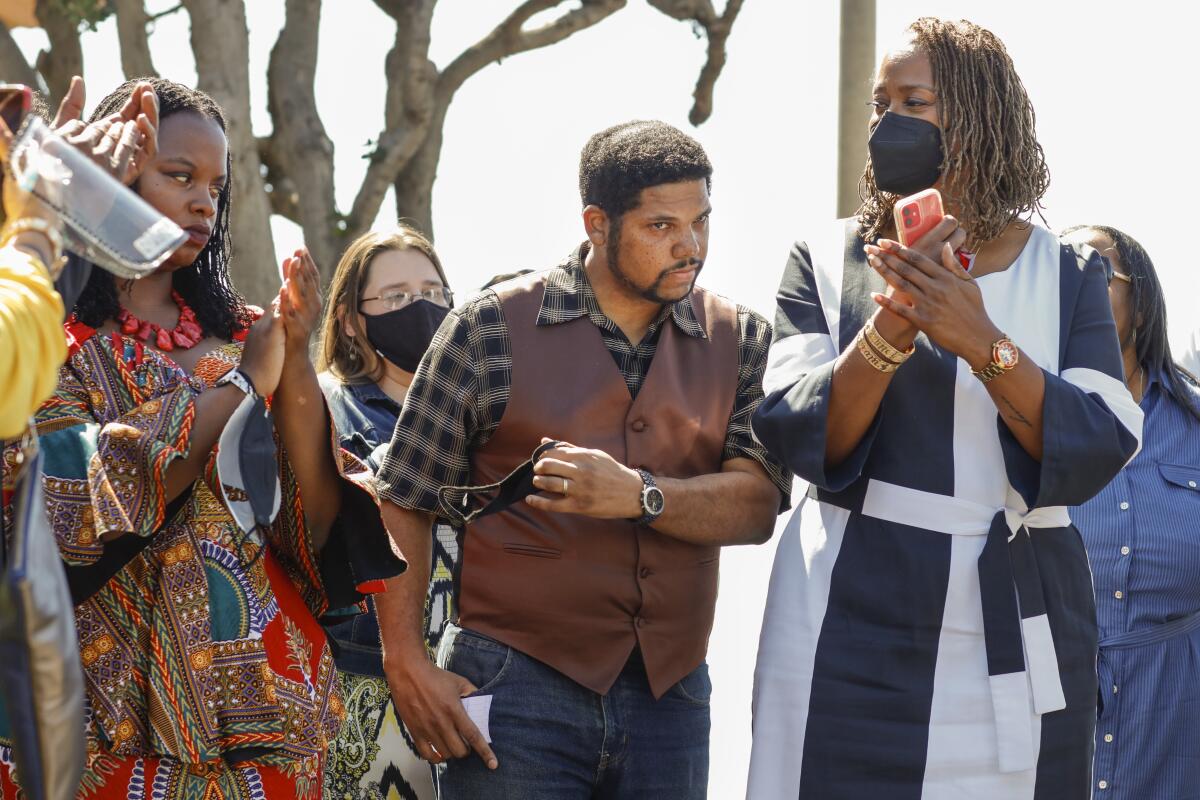
Having county and state officials — and now the governor — take action marks a watershed moment for the state and nation. Many say Bruce’s Beach could forge a path for those seeking ways to reckon with our country’s history of violently dispossessing Indigenous people and blocking Black people, Japanese Americans, Latinos and many others from building generational wealth.
Newsom, flanked by state and county leaders, as well as Manhattan Beach Mayor Hildy Stern, justice advocates and members of the Bruce family, made clear his position on the past — and future — of Bruce’s Beach.
The return of my family’s land will let us do what countless American families have done since our country’s founding: inherit property and build wealth.
“As governor of California, let me do what apparently Manhattan Beach is unwilling to do: I want to apologize to the Bruce family,” said Newsom, who signed the bill before dozens of cameras and handed the pen to Anthony Bruce, whose great-great-grandparents had once owned the land.
“I really believe this can be catalytic,” Newsom said. “What we’re doing here today can be done and replicated anywhere else. There’s an old adage: Once a mind is stretched, it never goes back to its original form.”
The story of Bruce’s Beach begins with the Tongva, who roamed this windy stretch of coast before George Peck and others staked their claim to it in the early 1900s and developed what is known today as Manhattan Beach.
By 1912, Willa Bruce had purchased for $1,225 the first of two lots along the Strand between 26th and 27th streets. While her husband, Charles, worked as a dining-car chef on the train running between Salt Lake City and L.A., Willa ran a popular lodge, cafe and dance hall — providing Black families a way to enjoy a weekend on the coast.
Where the federal government has failed, California enacted new laws that will finally address police misconduct and set an example for reparations.
Many referred to this area as Bruce’s Beach. A few more Black families, drawn to this new community, bought and built their own cottages by the sea.
But the Bruces and their guests faced years of threats and harassment from white neighbors. The Ku Klux Klan purportedly set fire to a mattress under the main deck and torched a Black-owned home nearby.
When racism failed to drive the Bruce’s Beach community out of town, city officials in 1924 condemned the neighborhood and seized more than two dozen properties through eminent domain. The reason, they said, was an urgent need for a public park.
Gov. Gavin Newsom has authorized the return of property known as Bruce’s Beach to the descendants of a Black couple who had been run out of Manhattan Beach almost a century ago.
But for decades, the properties sat empty. The Bruces’ two oceanfront parcels were transferred to the state in 1948, then to the county in 1995. As for the remaining lots, city officials eventually turned them into a pretty park overlooking the sea.
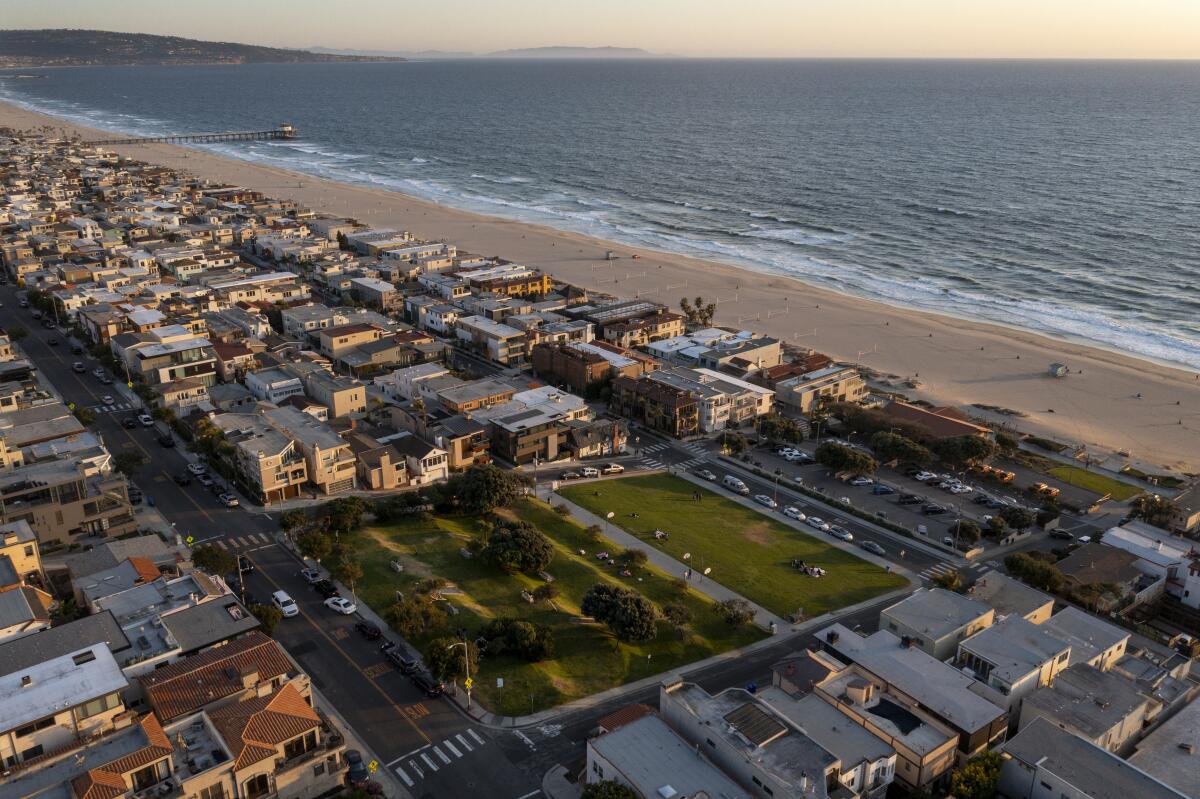
When L.A. County Supervisor Janice Hahn realized that the county now owned the parcels where the Bruce resort once stood, she jumped into action. She called the great-great-grandson of Charles and Willa Bruce and initiated discussions with state lawmakers, county lawyers and assessors.
Hahn called the governor’s signature — and the unanimous support of the state Legislature — an important milestone. Now, she said, it’s on the county to get things done.
“The law was used to steal this property 100 years ago, and the law today will give it back,” she said with L.A. County Supervisor Holly Mitchell standing by her side.
“My goal over the next several months will be to transfer this property in a way that not only works for the Bruce family — but is a model that other local governments can follow,” she said. “Returning Bruce’s Beach can and should set a precedent for this nation, and I know that all eyes will be on Los Angeles County as this work gets underway.”
One option on the table is to transfer the land with a ground lease back to the county to continue the lifeguard operations currently on the property — and pay fair-market rent to the Bruce family.
Before Manhattan Beach shut it down, Bruce’s Beach was a famous Black-owned beach resort. Now, some want the city to atone for its actions.
A preliminary report by county staff released this summer laid out the many details that still need to be addressed: assessing the property’s worth, verifying the legal descendants, determining the actual terms of the lease, and other technicalities.
George Fatheree, a real estate transaction lawyer who represents the Bruce descendants and has been helping them navigate the process pro bono, said he’s been encouraged by the progress so far but cautioned that this land transfer needs to be executed flawlessly. His team has been looking into every possible detail that could backfire — as well as any unintended consequences that might make this process vulnerable to legal challenges.
“We have to do this exactly right. People are watching,” said Fatheree, who said this issue has struck close to his heart for years. “We want to make sure this is a success and a potential model for others.”
As for Manhattan Beach, which owns the remaining condemned properties that had been turned into a park, questions remain on how to move forward from this uncomfortable past. Many disputes have exploded over the last year — from disagreements over the history itself (and how to revamp the school curriculum to teach it), to whether the city should even issue a formal apology.
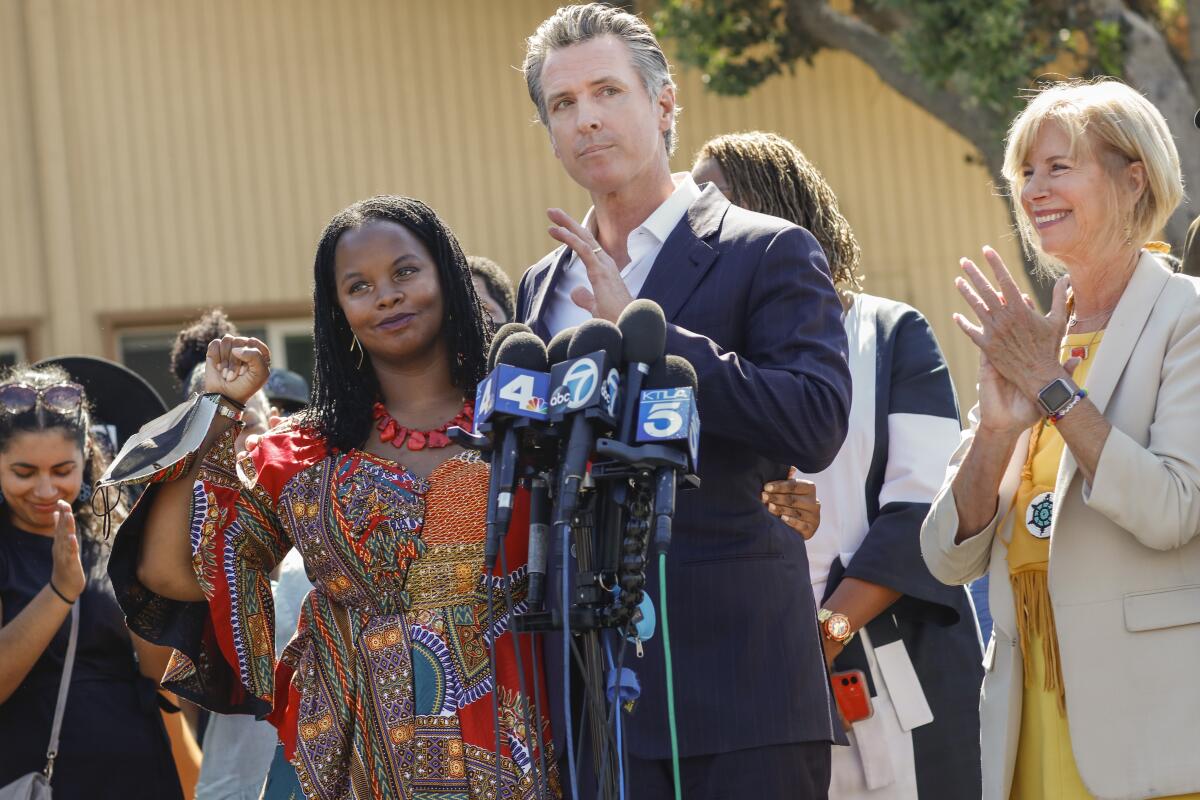
Kavon Ward, who has championed this cause through her grassroots movement Justice for Bruce’s Beach, said she was empowered by Thursday’s news but emphasized that the work was just getting started.
“My heart, my spirit, my soul has been in this from the beginning. … This took audacious courage,” said Ward, who recently started a national organization called Where Is My Land to help other Black families with similar stories as the Bruces. “I am empowered to continue that audacious courage as I move forward in helping other Black families obtain restorative and reparative justice.”
Manhattan Beach won’t apologize for running Black property owners out of town 100 years ago, but a county official seeks to make restitution.
For Anthony Bruce, the great-great-grandson of Charles and Willa Bruce, the last few months have been a jumble of emotions.
What Manhattan Beach did almost century ago had torn his family apart. Charles and Willa ended up as chefs serving other business owners for the remainder of their lives. His grandfather Bernard, born a few years after his family had been run out of town, was obsessed with what happened and lived his life “extremely angry at the world.” Bruce’s father, tormented by this history, had to leave California.
Today, Bruce works as a security supervisor in Florida. It has been painful to talk publicly about the beach that bears his family’s name, but Bruce is heartened by the new movement of people calling for justice.
He paused, reflecting on the relief that might finally be within reach.
“We do thank God, because this is something that we’ve been praying for, for decades,” he said. “Hopefully this is the start of a new beginning for us.”
More to Read
Sign up for Essential California
The most important California stories and recommendations in your inbox every morning.
You may occasionally receive promotional content from the Los Angeles Times.
